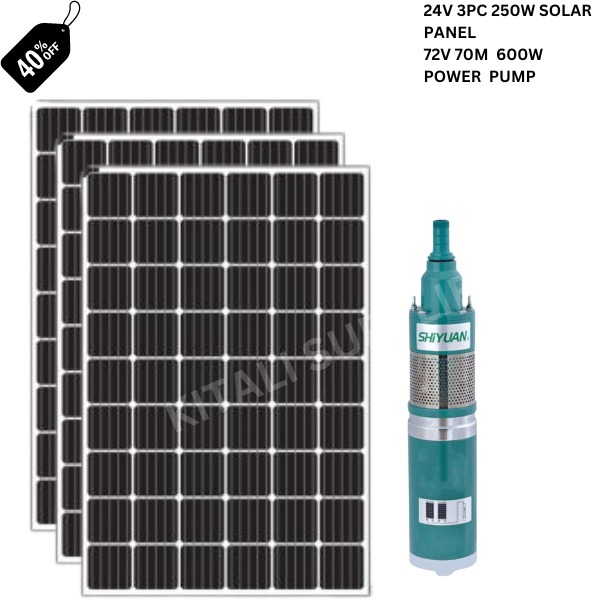Description
The amalgamation of the Shiyuan DC pump, engineered specifically for 72V operation with an impressive capacity to attain a maximum head of 70 meters while consuming 600W of power, with a trio of 250W 24V solar panels, presents an intriguing proposition for solar-powered water pumping. However, the realization of this potential synergy necessitates a nuanced examination of various factors to ensure the system's efficacy and efficiency in real-world applications. Initially, the cumulative power output of the three 250W solar panels might seem to adequately fulfill the power demands of the 600W pump. Yet, in transitioning from theoretical calculations to practical execution, a range of factors must be meticulously considered. Efficiency losses, inherent in the energy conversion processes and system components, can significantly impact the actual power available for propelling the pump. These losses manifest at multiple stages, encompassing the capture of solar radiation, its conversion into electrical energy, and the subsequent mechanical operation of the pump. Moreover, the issue of voltage compatibility emerges as a critical consideration. While the solar panels are rated at 24V, the pump operates at a higher voltage of 72V. This voltage disparity necessitates the integration of voltage conversion mechanisms or the inclusion of supplementary panels to align the voltage output with the pump's requirements and optimize power delivery. Furthermore, the variability of sunlight intensity throughout the day, as well as seasonal fluctuations, introduces additional complexity. Depending on geographical location and prevailing environmental conditions, the solar panels may not consistently deliver their maximum rated output. Therefore, it becomes imperative to assess the system's performance under diverse sunlight conditions and to devise strategies for managing potential energy shortfalls during periods of diminished sunlight. Addressing these challenges and optimizing the system's performance may require additional measures. This could entail the integration of voltage conversion components to harmonize the voltage output of the panels with the pump's operational requirements, or the incorporation of supplementary panels to bolster power generation. The implementation of advanced monitoring and control systems can also prove instrumental in maximizing energy utilization and adapting the system to dynamic environmental conditions in real-time. Moreover, adherence to a rigorous maintenance regimen assumes paramount importance in sustaining long-term performance and reliability. Regular inspection, cleaning, and maintenance of both the solar panels and the pump system are indispensable practices aimed at mitigating the risk of performance degradation and ensuring the enduring efficacy of the equipment. In summary, while the conjunction of the Shiyuan DC pump and the three 250W 24V solar panels holds immense promise for solar water pumping applications, a comprehensive evaluation of efficiency, voltage compatibility, sunlight variability, and maintenance requisites is imperative. By holistically addressing these factors, it is plausible to unlock the full potential of solar energy for the provision of reliable and sustainable water pumping solutions.




